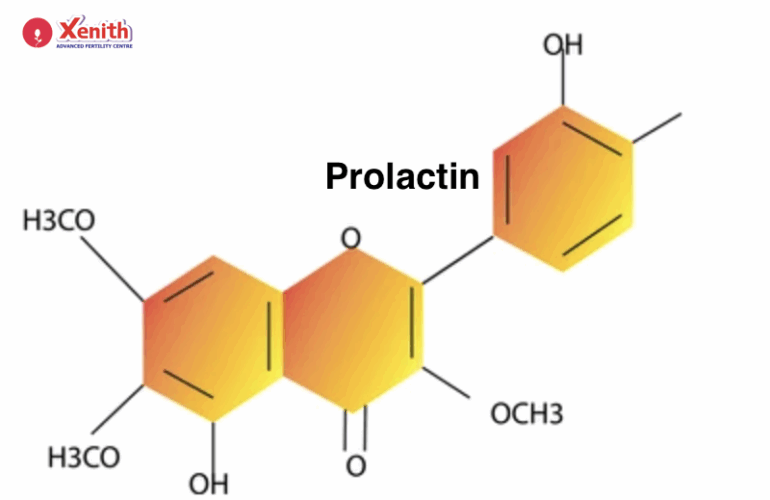Breastfeeding involves feeding a baby human milk from the breast. Breast Milk provides the ideal nutrition with proper combinations of fat, protein, carbohydrate, vitamins, antibodies and various other things. The breast milk could be fed directly from the breast or pumped from the breast, stored and later fed through a bottle. Most doctors recommend breastfeeding the baby for at least the first 6 months after their birth.
There are 3 types of breast milk produced at different stages after the baby’s birth. The milk content changes gradually over time. The milk composition and its quantity varies with the baby’s needs because as the baby grows, they need more food and different levels of nutrients. The first milk produced is colostrum, also called liquid gold, which lasts for the first few days and is usually yellowish in color and thicker than the other milk. After this comes the transitional milk which is thinner in consistency and lasts for the next few weeks. Transitional milk is a mixture of colostrum and mature milk and eventually becomes mature milk after some time. After about 2 to 4 weeks, mature breast milk will be produced for the rest of the time the breast milk is produced.
There are many benefits to breastfeeding not only for the baby but also for the mother.
Benefits for the baby
- Nutrition– the colostrum, which is easily digestible by the newborn, is low in fat but high in protein especially whey. Colostrum helps develop the immature digestive tract of the newborn. It also works as a laxative to help pass the newborn’s initial stools and remove any excess bilirubin in order to prevent jaundice. The mature milk which has higher levels of fat and lactose amongst other things provides all the nutrients needed to help the baby grow and remain healthy. The breasts also start producing larger amounts of milk as the baby grows and needs more milk. Breast milk also keeps the babies hydrated. So human breast milk provides optimal nutrition for the baby’s growth and development and mothers need to eat a balanced diet to make sure the baby gets proper nutrition. Here’s a breakdown of the various nutrients present in breast milk:
Carbohydrates-Babies, whose gastrointestinal tract are not very developed, ingest carbohydrates in the form of lactose rather than glucose.
Protein- which is needed for growth and development, is present in the form of mostly whey and casein in human breast milk. Caseins are the main source of calcium and phosphate and it turns into solid curds when it is exposed to the acid in the stomach and may help the baby feel fuller. Whey remains as a liquid and is thus easier to digest. These proteins also aid in digestion, provide hormones and other growth factors.
Fat-is also present although the mature milk contains more fat than colostrum and it provides energy for the infant. The fat content can vary depending on the mom’s diet and change in weight during pregnancy. Fats help develop the baby’s brain and nervous system.
Vitamins- are needed for normal growth and there’s enough of it in breast milk. However, the levels of Vitamin D and K might not be enough and might need to be supplemented from external sources.
- Immunity- breast milk, especially the colostrum, contains antibodies which can help fight off infections from bacteria, viruses and other pathogens. Antibodies are used to fight germs that the body comes in contact with. Breast milk also contains white blood cells, lactoferrin, lysozyme, oligosaccharides, probiotics and prebiotics. It has been found that babies who are not fed breast milk are more susceptible to various health issues like ear and throat infections, common cold, gut infections, various allergies, asthma, eczema, pneumonia, type 1 diabetes, and diarrhea to name a few. Recovery time is also improved and the severity of the illness is reduced in babies who are fed breast milk. Not drinking breast milk is sometimes associated with sudden infant death syndrome (SIDS) where a baby sometimes dies in their sleep. Colostrum has a high level of immunoglobulin A (IgA) which is an antibody made by white blood cells. IgA forms a protective layer in the internal surfaces of the body like the baby’s nose, mouth, throat, lungs and digestive system and binds the germs that come across it, thus preventing them from infecting the body and causing an illness. IgA is small enough to pass into the breastmilk and therefore is passed onto the baby whereas most other antibodies are too big to be passed from mother to baby via breast milk. Since the baby and the mother are generally exposed to the same germs, the mother’s breast milk can thus protect the baby. Baby formula lacks these antibodies. Lysozyme inhibits the multiplication of pathogenic bacteria. Lactalbumin is needed for making lactose in the mammary gland and it helps in absorption of essential minerals like calcium and zinc. Lactoferrin aids in absorption of iron into the body from the intestine and prevents the harmful bacteria from growing in the gastrointestinal tract. Oligosaccharides in milk support the growth of beneficial gut bacteria (probiotics) preventing pathogens from attaching to the intestine. Prebiotics are basically foods like fiber for these probiotics.
- Weight gain- occurred in babies in a healthy way due to components in breast milk which support healthy gut bacteria which, in turn, could affect storage of fat. The hormone leptin in milk can control appetite and satiate hunger. It could also prevent childhood obesity and help develop healthy eating patterns.
- Improves brain development- It has been found that breast feeding improves cognitive development like improved memory, greater language and motor skills and intelligence in early childhood and sometimes even into adulthood. It also helps in the social and emotional development in children. (1)
For the mother
- Breastfeeding helps the uterus contract- Oxytocin is a hormone which aids in bringing the uterus back to its original size after pregnancy. During labor, the body produces high amounts of oxytocin by encouraging contractions to help deliver the baby and reduce bleeding. A breastfeeding mother has higher levels of oxytocin which leads to faster involution of the uterus and less bleeding after delivery.
- Increased emotional and physical bonding- Being in close physical contact and eye contact with the baby during breastfeeding could make you feel more connected to your baby and this could also help decrease behavioural issues. Breastfeeding could reduce anxiety, stress and negative moods in mothers. They were also found to have reduced blood pressure, and higher quality sleep patterns and better social interactions and relationships than mothers who fed their babies infant formula. (1)
- Lose baby weight faster- than mothers whose babies are fed formula because breastfeeding could burn more calories. Also, nursing moms are often more conscious of what they eat.
- Decreased risk for postpartum depression (PPD)- which could develop shortly after childbirth and those with PPD are more likely to have trouble breastfeeding and do so for a shorter period.
- Breastfeeding reduces your risk of breast and ovarian cancer- They also have lower risk for high blood pressure, arthritis, high cholesterol, heart disease, and type 2 diabetes. The risk of ovarian cancer decreases if the mother breastfeeds for at least 8 to 10 months. (2)
- Breastfeeding saves time and money- because it is free and you don’t have to spend money on baby formula, bottles and other accessories. It also saves you time in preparing the formula as well as cleaning and sterilizing the nipples and bottles. It is easier to travel when you are breastfeeding because you don’t have to take the baby formula and bottles with you everywhere you go and breastmilk is always at the right temperature.
Human breast milk is thus thought to be the gold standard for infant feeding. As well as its nutritional benefits, other advantages include social, psychological, improved health, economical and so much more for both the baby and the mother. If you have any questions, feel free to contact the experts at Xenith Advanced Fertility Centre.




